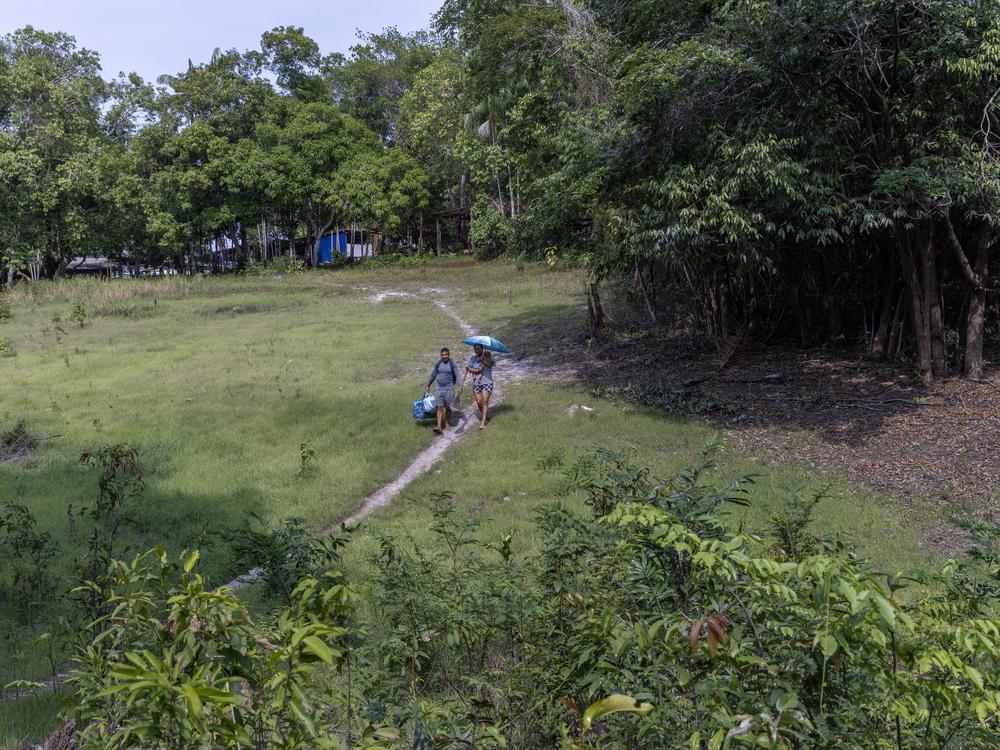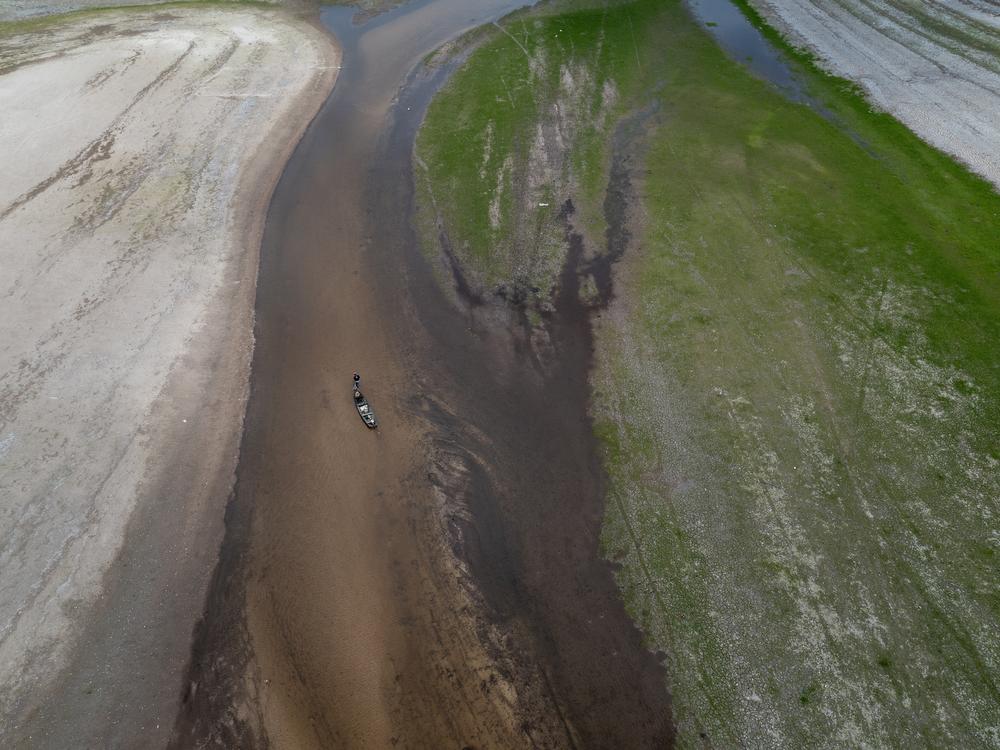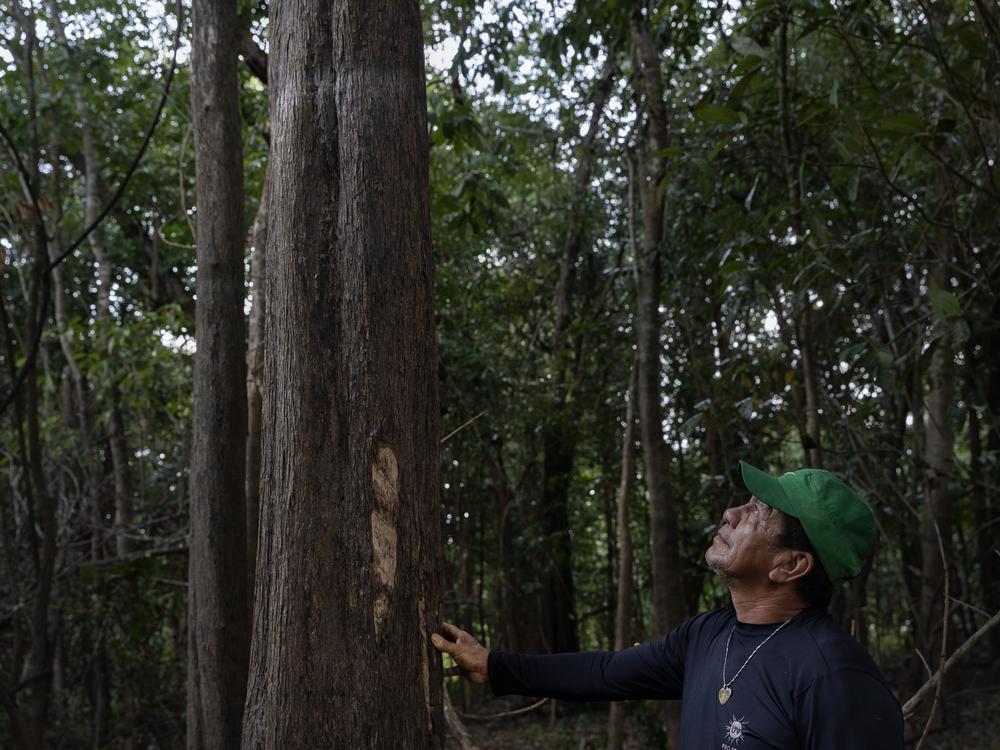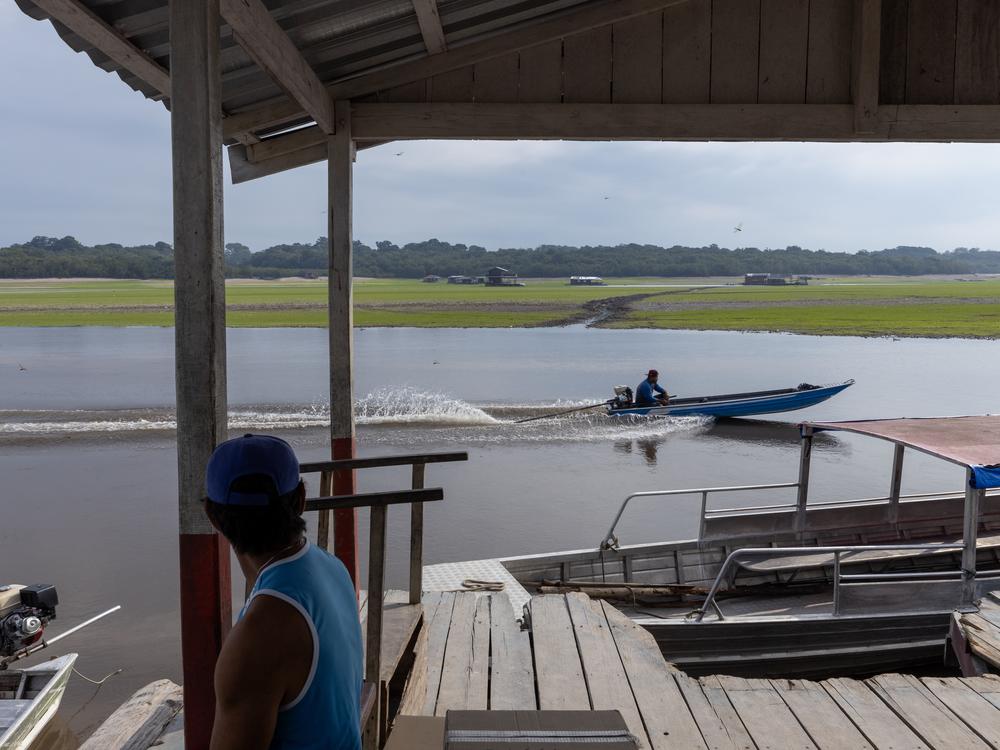Section Branding
Header Content
Rain is coming, but not enough after punishing Amazon drought
Primary Content
MANAUS, Brazil — Dark clouds rumble over the tiny Amazon river community of Nossa Senhora do Livramento.
After two years of a devastating drought you’d think residents in this parched and isolated town of about 350 families would be elated. Many just shrug at the torrential, yet brief, downpour. Some liken it to that burst of energy a patient can get moments before death.
Such pessimism is understandable given the devastation this and hundreds of other communities have been experiencing throughout the Amazon. Dependent on its vast riverways for everything from transportation to food, millions of residents have been left high and dry.
In the more than 100 years since river levels have been monitored, never has the mighty Amazon and the major tributaries of the world’s largest river system recorded such little rainfall. In October, the Rio Negro hit the lowest levels since records were first kept in 1902.
And now as the annual dry season winds down, anxiety is growing as to whether the rains will come and will they bring enough water to refill the dry riverways.
Renato Senna, a Climatologist at INPE, Brazil’s National Institute for Space Research says, two years of unprecedented drought will be tough to overcome in just one rainy season. “We thought 2023 was bad, but 2024 has been far worse,” he says.
Climate change and increased deforestation are leading contributors to the drought. On top of that, the El Niño weather, which warms the Pacific Ocean waters off South America, was much stronger and longer this year, adding to even more heat to the Amazon.
"The rate at which the Amazon is drying up is scary and much faster than anyone predicted, “ says Senna. In some parts of the Amazon, the annual dry season is now lasting one month longer than it did in the 1970s, according to researchers.
Senna says it’s too soon to predict whether the upcoming expected La Niña wet weather phenomena will be stronger than normal and enough to refill the rivers.
Thirty-two-year-old Joelson Posta de Santo, who lives in Nossa Senhora do Livramento is hopeful. “God willing everything will return to normal. The drought has been so severe,” he says.
The town is about a 30-minute boat ride up the Rio Negro from the Amazon’s sprawling city of Manaus. De Santo stands on the now brittle banks of what was a large creek where boats used to be able to power right up to Nossa Senhora do Livramento’s main plaza. The creek bed is bone dry with tall bright green grass covering the once submerged floor. A few stranded boats are tied to far off trees.
With the river and creek dry De Santo hasn’t had much construction or electrical work. Instead he hauls goods to town from the community’s pier, which had to be moved further down river, where the new shoreline now sits.
It’s now a 20 to 30 minute walk to town. First crossing the newly exposed beach, then through a well-worn parched trail winding through tall trees that were once nearly submerged by the river.
As community leader Paulo Roberto Ferreira da Silva walks the trail he points to white marks more than 13 feet overhead on the trees where the water line used to reach. “This was the best fishing”, he says. He too is waiting for more rain.
With so little rain, large beaches and huge sandbars have emerged on the Amazon river and its tributaries, cutting off whole communities. In Amazonas State, which has few major roadways, more than 60 municipalities have declared state of emergencies under the drought.
Boat operator João Aroldo Viera lives outside the capital Manaus. He maneuvers his small rig around a huge sandbar that has emerged at the popular point where the black waters of the Rio Negro meet the pale green Amazon River. The two don’t mix.
He says watching the water disappear is sad. “The land just keeps growing and there is not enough river for us to move,” he says. His community has been hit really hard by the drought.
Officials are dredging parts of the Amazon to keep the waterways open and have increased the number of ferries crossing the rivers to access the limited highways between major cities.
Isair Lazaretti is waiting on a barge to cross the Rio Negro into Manaus where he’ll get on one of the only roads available to transport his load of steel wiring.
He prefers taking a barge down the river when it's full and can support bigger loads. “It's better, you don't wear out your truck, there's no wear and tear,” he said. He recently lost an axle on the dirty bumpy roads of the Amazon, not to mention the exhaustion of the long lonely drives.
The drought has had a punishing impact on food prices too. At Manaus’ giant fish market, monger Dantas Abreu sells one of the Amazon’s largest fishes, the pirarucu. He says his costs have jumped some 25 percent. He estimates he’s lost about half of his clientele.
“I'm 50 years old and I've never seen two droughts like these before,” he said. He blames deforestation. He has two kids and worries about their future with more severe weather.
“We are feeling it now, but our children will feel it much more,” he said.






